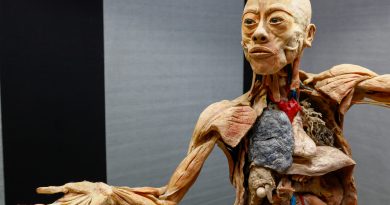positive and negative control of gene expression
Why is this done? The general transcription factors have at least two basic functions: (1) They (in eukaryotes, as a multi-protein complex) are able to chemically recognize a specific sequence of DNA and (2) they are able to load RNA polymerase at that site. Monod discovered that if tryptophan is present in relatively high quantities in the growth medium, the enzymes necessary for its synthesis are repressed. Finally, eukaryotic genes often have different splice variants, where different exons can be included in different mRNAs that are transcribed from the same gene. The mean lifetime of mRNA can also vary dramatically depending on the organism. What two domains do transcription factors tend to have? Maybe there are a few more exceptions, but most cells have the same DNA. The process of gene expression requires multiple steps depending on what the fate of the final product will be. It is quite reasonable to also state, "we need a mechanisms to regulate the degradation of particularRNAs and particularproteins. Regulator genes may control the synthesis of specific enzymes by a negative control system which prevents gene expression in the absence of inducer or by a positive control system which requires both inducer and a regulator protein. approximately 5% of the cytosine residues are methylated in the genome of any eukaryote. The TF is therefore acting as a negative regulator. HHS Vulnerability Disclosure, Help By controlling the gene expression, cells can control the production of functional proteins in the cells. 8600 Rockville Pike An example of a gene product encoded by a regulatory gene is, a conditional mutation is one that allows a mutant gene product to function normally under the ___ condition, but to function abnormally under the __ condition. Again, this will require the activity of some protein that recognizes both the stimulus and the DNA sequence of thespecific promoter(s) itneeds to regulate. In practice we often find that the definition depends on the context of the discussion. WebUsing this potent regulator, we demonstrate that inducible nerve growth factor (NGF) secretion into conditioned media can elicit neurite outgrowth in co-cultured PC12 cells. Positive regulation by CAPGlucose is the preferred substrate for energy metabolism. Disclaimer. Compared to using tumor profile pathways that calculate 200 gene expressions requiring analysis of comprehensive gene expression; the measurement of a single gene is far more practical as a predictive biomarker, both from a cost and simplicity stand point, especially when it has the ability to assess predictive chemotherapy benefit Since the subject of regulation is both a very deep and broad topic of study in biology, in Bis2a we don't try to cover every detail - there are simply too many. around the world, Signal Transduction and Control of Gene Expression. The proteins that bind to the operator to silence trp expression are negative regulators. Reference: Let us consider a protein coding gene and work through some logic. The examples given above assumed that a single stimulus acts to regulate promoters. WebAll cells control when and how much each one of its genes are expressed. 1. Would you like email updates of new search results? Dnmt1 is a maintenance methylase and would be expected to enforce X inactivation and imprints of somatic cells. Some of them simultaneously control the expression of the UGA1 and UGA2 genes. PMC (Note: technically we could have broken down the properties of the promoter into design challenge subproblems. In both activation and repression, gene regulation requires specialized proteins to change the transcriptional output of the gene being observed. 2017, Filed Under: Molecular Biology Tagged With: Compare Positive and Negative Gene Regulation, Negative Gene Regulation, Negative Gene Regulation Definition, Negative Gene Regulation Features, Positive and Negative Gene Regulation Differences, Positive Gene Regulation, Positive Gene Regulation Definition, Positive Gene Regulation Features, Positive vs Negative Gene Regulation. lacO mutations are cis-acting because this mutation causes a change in the ability of the repressor to bind to the operon on the same strand. Suggestion: describe the difference between a "transcription factor", as describe immediately above, and the "general transcription factor"s described previously. The function of the RNA polymerase, as a polymerase, isto move along any segment of DNA, making an RNA transcript, guided by thetemplate strand. How is this possible, when opposing results are achieved? Which of the below is NOT true about the location of enhancers? The half-life of mRNA in yeast is ~20 minutes and 600 minutes for human cells. The amino acid tryptophan is one such amino acid. E. coli bacteria are placed into a medium containing glucose and lactose. Which of the genes below do you expect to be turned on? What are the differences between neutral mutations and silent mutations? Biochem J. However, there is a catch. A similar analysis can be done with positively acting TFs- that is, TF's that help promote polymerase loading at the promoter and/or initiation of transcription. This intrinsic property of a promoter, it's ability to produce transcript at a particular rate, is referred to as promoter strength. a mutant e. coli strain, grown under conditions that normally induce the lac operon, produces high amounts of B-galactosidase. The answer: different gene regulation! With a few exceptions (C. elegans and related nematodes), eukaryotic genomes do not have genes arranged in operons. These are factors that need not be adjacent to the genes they control. This is due to two factors: (1) the constitutive promoter strength for the operon is relatively low and (2) the constant presence of the LacI repressor protein negatively influences transcription. It is helping to make a decision about whether to transcribe a gene or not depending on the abundance of the environmental signal. E. coli, like all organisms, needs to either synthesize or consume amino acids to survive. If you understand the similarities and differences in eukaryotic and prokaryotic gene regulation, then you know which of the following processes are exclusive to eukaryotes, which are exclusive to prokaryotes, which occur in both, and how each is accomplished: The lac operon is a good modelfor understanding gene regulation. Transcription is the initial step of gene expression. Consider a system that has both positive and repressible negative controls. Each bacterial RNA polymerase is loaded onto a promoter by sigma factor. Attribution: Marc T. Facciotti (own work). 2. repressible system: the repressor is normally inactive but is activated by the corepressor. RNA polymerase is not recruited to initiate transcription. A genetic engineercould place the lac promoter 5' of any coding region of interest, and the lac promoter would confer lactose-inducibility on that coding region. When lactose is present, an inducer molecule derived from lactose binds allosterically to the Repressor, and causes the Repressor to leave the Operator site. Nucleotide excision repair - able to remove wide range of defects in DNA especially bulky DNA lesions. The signaling pathway activates transcription factors in the nucleus, which bind to DNA near division-promoting and growth-promoting genes and cause them to be transcribed into RNA. 4. Yes that is one example. This results in families of promoters with different strengths that can be used to control the maximum rate of gene expression for certain genes. WebA classic example of negative repressible regulation of gene expression involves the trp operon, which is regulated by a negative feedback loop. This means that the same transcriptional activator or repressor can regulate transcription of every single gene that has that particular DNA regulatory element associated with it. However, when environmental tryptophan availability is low, the switch controlling the operon is turned on, transcription is initiated, the genes are expressed, and tryptophan is synthesized. Present a description of the molecular mechanism of the mutagenic action of the following mutagens. An example would be the lac operon's repressor protein. It is most commonly found in females. In what way is DNA methylation related to genetic regulation? Briefly describe the four different ways these small RNAs influence gene expression. chromatin that is condensed inhibits transcription. What is Negative Gene Regulation RNA polymerase by itself binds rather poorly to the lac promoter. Acta Endocrinol Suppl (Copenh). N.p., n.d. Enhancers have several structural and functional characteristics that distinguish them from promoters. The first level of control of gene expression is at the promoter itself. Obviously, one property is that they are able to associate with the general transcription factors mentioned above. What does an example of this feedback loop look like. 5. What is its sequence? A schematic showing a protein coding gene and some of the questions or problems that we need to ask ourselves or alternatively problems we need to know solutions for if we are to understand how regulation of the transcriptional portion of the gene's expression is regulated. Coordinate expression of multiple genes is accomplished through the presence of response elements. Provide an example of alternative splicing. Degradation of a eukaryotic mRNA is generally a. There must be some mechanism(s) to regulate the first step of this multi-step process, the initiation of transcription (just getting things started). This allows us to examine some fundamental concepts regarding the regulation of gene expression and to examine a few real examples of those concepts in action. Click the card to flip . In the case of positive control, the genes are expressed only when an active regulator protein, e.g. DNA methylation is another epigenetic alteration leading to lessened protein expression, 4 ways small RNAs influence gene expression, 1. inhibit translation Finding a way to recruit this "sequence agnostic"polymerase to a specific site therefore seems contradictory to its usual behavior, which displays no particular preference for a particular sequence. regarding regulation of the tryptophan operon, what type of regulatory molecule might one approximately call the amino acid tryptophan? You'll recall that the singleArchean RNA polymerase is more similar to (all three) eukaryotic RNA polymerases than to thebacterial polymerase. Finally, the third term used to classify promoters is by the use of the term repressed. By contrast, if the amount of transcription from a constitutive promoter is low (relative to most other promoters) we will call that promoter a "weak constitutive" promoter. The DNA is depicted as orange tubes and opposing blue:green bases. in what cellular compartments are the introns removed from pre-mRNA? Trying to define "gene expression" A regulatory element is a DNA sequence that certain transcription factors recognize and bind to in order to recruit or repel RNA polymerase. Clipboard, Search History, and several other advanced features are temporarily unavailable. Since the transcription factor actively binds to the operator to keep the genes turned off, the trp operon is said to be "negatively regulated". when there is no tryptophan in the medium, transcription of the trp operon occurs at high levels. where does this primer come from? This term describes genetic elements that affect other elements only when they are located adjacent to them. Control of expression of genetic information in E. coli by cyclic AMP. Activators are examples of positive regulation and repressors are examples of negative regulation. Direct link to RowanH's post Yes that is one example. (2) binding of the effector molecule to the transcription factor could cause the TF to bind to its DNA binding site, repressing a promoter and therefore turning off gene expression. For example, eukaryotic HSP (heat shock protein) genes are located on different chromosomes. The operon is never expressed if a mutation prevents the repressor from binding to the small moelecuel, processing, transport, post-translational, transcriptional. The different mRNAs encode for different proteins because they contain different exons. The dense aggregate of DNA that can be seen in electron micrographs is called the nucleoid. What is a homeobox and what is it's significance? In eukaryotes, important general transcription initiation factors include TATA binding protein (TBP) and TFIIB, which function in conjunction with numerous other protein complexes (for a total of nearly 100 proteins) to recruit RNA polymerase II. Stable molecules can be transformed into what types of hazardous materials? So, we could state, "we need a mechanism to regulate the initiation of transcription, in aparticular gene or group of genes." How are promoters sensitive to external stimuli? we would interpret this to mean that what modification neutralizes the charge on histones that promote ionic interaction with DNA? Transcription factor can work alone or with other proteins to regulate the rate of gene expression by promoting or blocking RNA polymerase enzyme, which catalyzes the mRNA synthesis. This structure forms when an extra X chromosome is methylated and largely inactivated. Tryptophan acts as a corepressor to activate the tryptophan repressor protein; it is also involved in an attenuation system, which causes the termination of transcription. The following may be caused by mobile genetic elements except: CAN: activate a gene in which they reside; cause chromosome breaks, disrupt a gene; NOT: undergo mutation. Gene regulation is, therefore, all about understanding how cells make decisions about which genes to turn on, turn off or to tune up or tune down. official website and that any information you provide is encrypted The export of mRNAs from the nucleus to the cytoplasm is also regulated, as is stability of the properly processed mRNA in the cytoplasm. Name three types of consensus sequences or modular DNA sequences that exist upstream from the coding regions of some eukaryotic genes. We see this positive control of transcription happen when glucose levels decline. A promoter that affects only genes that are on the same piece of DNA is ____-acting, Alternative splicing is known to be important in the regulation of.
In the examples above, the binding of a effector molecule to a transcription factor could have one of two different effects: (1) binding of the effector molecule could induce a DNA-bound transcription factor to release from its binding site, derepressing a promoter, and turning on gene expression. Chunk of roughly 22-30 nucleotides is removed leaving a single stranded gap that is filled in a sealed. The specific DNA sequences bound by transcription factors areoften, in bacteria, called operators and in many cases the operators are very close to the promoter sequences. Transfection of negative control siRNA is used to determine whether changes in phenotype or gene expression are nonspecific. To determine this we look at what happens when the TF binds DNA (whether a small molecule is bound to the TF or not). Simply realizing that degradation - and the tuning of degradation - can also be a factor in controlling the expression of a gene is sufficient for Bis2a. Create a list of hypotheses with your classmates of reasons why the regulation of gene expression is important for prokaryotesand for eukaryotes. The synthesis of many catabolic enzymes produced by bacteria is induced by the substrate of the enzyme. Transcription factor binding sites can vary in location relative to the promoter. As one can imagine, the disaccharide can be an important food-stuff for microbes that are able to utilize its two hexoses. This could be accomplished by the action of a negative transcriptional regulator. Different cells in a multicellular organism may express very different sets of genes, even though they contain the same DNA. { "2.01:_BIS2A_Success_Tips" : "property get [Map MindTouch.Deki.Logic.ExtensionProcessorQueryProvider+<>c__DisplayClass228_0.



